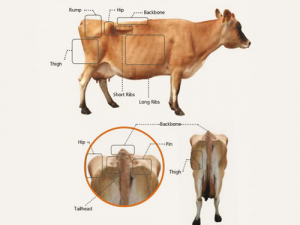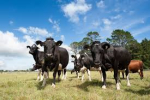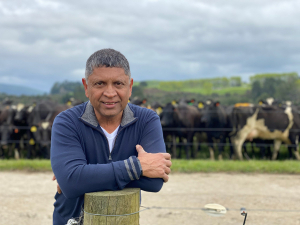Assessment of a cow's body condition score (BCS) gives a visual estimate of her body fat reserves, according to DairyNZ.
A cow's BCS fairly accurately measures her energy reserves, and BCS targets at key stages of lactation have been identified to optimise dairy production systems. These targets are based on research in NZ and overseas for 30 years.
BCS affects dry matter intake, milk production, reproduction and cow health and welfare. In addition, BCS in early lactation may affect the sex of future calves and the productive and reproductive capacity of heifers yet to be born.
Irrespective of the farming system or cow genetics, milk production is optimised when mature cows calve between BCS 5.0 and 6.0.
That said, the production benefits decline with increasing BCS and the risk of metabolic health disorders at calving is greater, such that increasing BCS beyond 5.0 in mature cows and 5.5 in first and second calvers cannot be justified.
Recommended calving BCS targets are a compromise between wanting cows with sufficient energy reserves for milk production, while not being so fat as to compromise cow health.
If the BCS of any animal falls below 3 (on a scale of 1-10) at any time, urgent action must be taken to improve condition.
Body condition scoring is a simple process. However, it is important to calibrate the eye by first condition scoring cows 'hands on' at the dairy. Then you are ready to BCS in the paddock.
Line up 15 cows with a range of BCS:
Put your hands on the important body parts.
Feel the amount of fat cover over the various body points and the difference between the cows. Note that gut fill can give visual impression of condition over the ribs; so it is important to feel the amount of fat cover.
Average the different areas to come up with the BCS for that cow.
What to look when you condition score cows:
Backbone - Is it flat or is there a ridge? Can you see or easily feel notches?
Long ribs - Can you see or easily feel the ribs? If visible how many can you see?
Short ribs - Can you see the short ribs? What do they feel like? Are the rib ends sharp or rounded?
Hip bones - Are the hip bones rounded or angular?
Rump - Is the area between the pins and hip bones, flat, sunken or hollow?
Pin bones - Are they pointed, 'tap' like or rounded?
Tailhead - Is there a hollow between the tail head and pin bones? Is it a deep V or shallow U shape?
Thigh - Is the area indented, flat or rounded? Is the muscle structure defined.
BCS at calving
Mature cow: BCS of 5.0
Heifers and rising 3-year-old: BCS of 5.5
No more than 15% of herd below BCS 5.0
No more than 15% of cows above BCS 5.5.
BCS at mating
The average decrease in BCS for the herd after calving is no more than 1.0.
No more than 15% of cows below BCS 4.0 and cows gaining BCS.


















